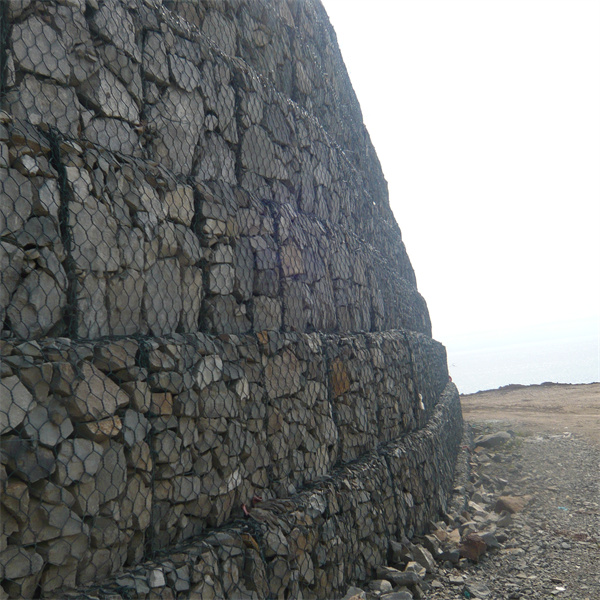Dec . 04, 2024 11:32 Back to list
Gabion Wall Cross Section Suppliers for Effective Erosion Control Solutions
Understanding Gabion Wall Cross Sections and Their Suppliers
Gabion walls have become increasingly popular in construction and landscape design due to their versatility, strength, and aesthetic appeal. These structures, typically made of wire mesh containers filled with stones or other materials, provide excellent drainage, erosion control, and support in various applications. One vital aspect of constructing gabion walls is understanding their cross sections and how suppliers deliver these products effectively.
The Basics of Gabion Walls
Gabion walls are primarily used in civil engineering projects, landscaping, and environmental restoration. They consist of three main components the wire mesh, the fill material (usually rocks), and the foundation. The wire mesh is usually made of galvanized steel or PVC-coated steel to ensure durability and resistance to corrosion. The fill material varies based on the project requirements and can range from natural stone to recycled materials, allowing for flexibility in design and function.
Cross Sections of Gabion Walls
A gabion wall's cross-section plays a crucial role in its stability and effectiveness. Understanding the cross-sectional design aids in determining the wall's height, thickness, and overall load-bearing capacity. Here are the key components to consider in a typical gabion wall cross-section
1. Base Layer This is the foundation of the gabion wall, which must be stable and able to support the structure's weight. Depending on the site conditions, this could involve compacted soil or a concrete slab.
2. Gabion Baskets The main structure of the wall consists of stacked wire mesh baskets. These baskets are filled with rocks or stones, which provide mass and support. Cross-sectional views will show how these baskets are arranged, usually with a larger base and tapering as they rise to enhance stability.
3. Backfill Additional material is often placed behind the gabion wall to help with drainage and to improve the overall strength of the wall. This backfill may consist of gravel or other permeable material that allows water to flow through while preventing soil erosion.
4. Slope Considerations The angle of the wall and the slope of the backfill can greatly influence the wall's performance. A properly designed slope can enhance the wall's resistance to lateral forces such as water pressure or soil movement.
gabion wall cross section supplier

5. Drainage Features Incorporating drainage pipes or weep holes within the structure helps manage water pressure behind the wall, reducing the risk of failure. Cross-section designs often indicate these features and their placement.
Choosing the Right Supplier
To build a reliable gabion wall, selecting a reputable supplier is essential. A good supplier should offer high-quality materials, expert advice on design and installation, and a clear understanding of local regulations and environmental considerations. Factors to evaluate when choosing a supplier include
1. Material Quality Check that the wire mesh is durable and meets required standards for tensile strength and corrosion resistance. Quality fill materials can also significantly influence the wall's performance.
2. Customization Options A supplier that can customize gabion baskets in various sizes and shapes will allow for more flexibility in design and application.
3. Expertise and Support A knowledgeable supplier can provide insights on best practices, applicable regulations, and expert installation tips.
4. Reputation and Reviews Researching customer reviews and testimonials can help gauge a supplier's reliability and the quality of their products and services.
5. Logistics and Delivery Efficient logistics and delivery options are crucial, especially for large projects that require timely access to materials.
Conclusion
Gabion walls serve as a practical solution for a variety of construction and landscaping challenges, thanks to their strength, adaptability, and aesthetic potential. Understanding their cross sections can help in planning and designing effective structures. When selecting a gabion wall supplier, it is essential to consider the quality of materials, customization options, and expertise to ensure a successful project. By focusing on these aspects, builders and landscape architects can create robust and visually appealing gabion walls that stand the test of time.
-
Why PVC Coated Gabion Mattress Is the Best Solution for Long-Term Erosion Control
NewsMay.23,2025
-
Gabion Wire Mesh: The Reinforced Solution for Modern Construction and Landscape Design
NewsMay.23,2025
-
Gabion Wall: The Flexible, Seismic-Resistant Solution for Modern Landscaping and Construction
NewsMay.23,2025
-
Gabion Wall Solutions: The Durable, Decorative, and Affordable Choice for Every Landscape
NewsMay.23,2025
-
Gabion Basket: The Durable and Flexible Alternative to Traditional Retaining Walls
NewsMay.23,2025
-
Gabion Basket: The Proven Solution for Slope Stability and Flood Control
NewsMay.23,2025
-
Versatility of Chain Link Fence Gabion
NewsMay.13,2025






